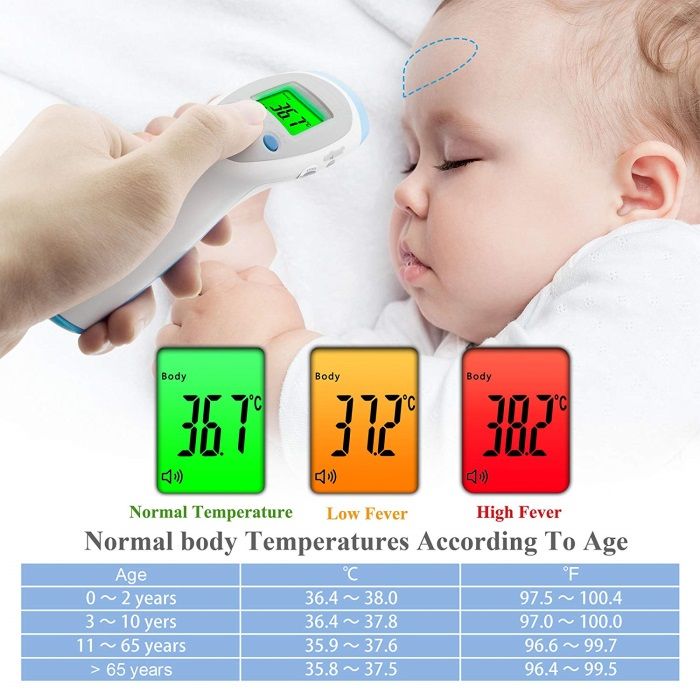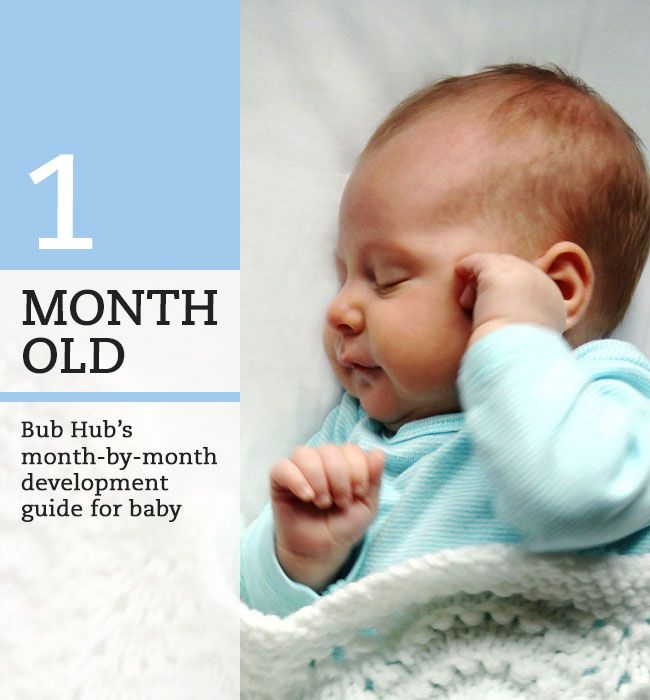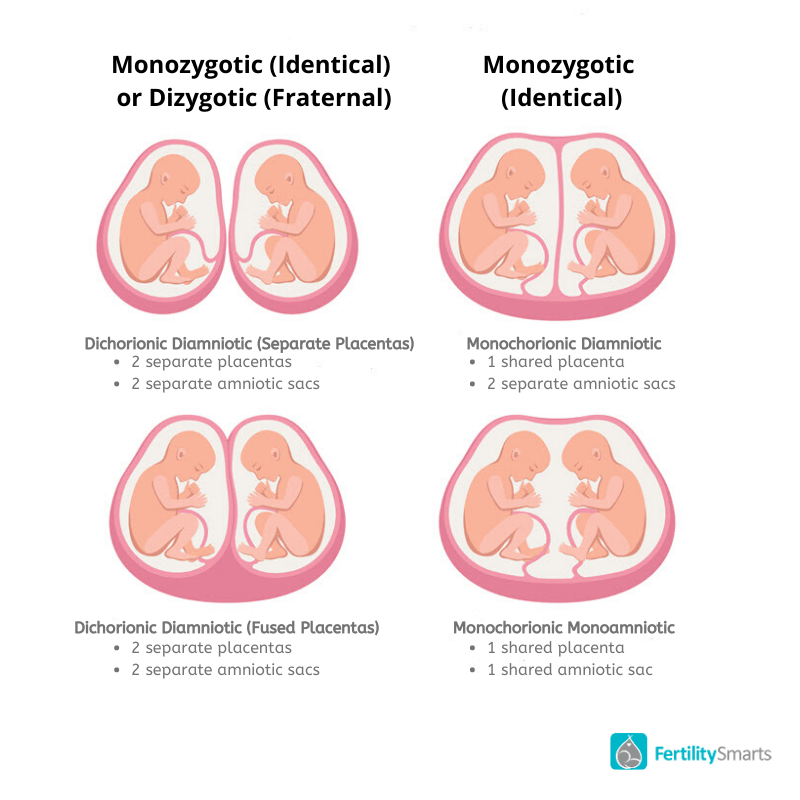Different newborn cries
4 Types of Cries & What They Mean
When your little one first arrived in this world, they likely announced their entrance with a cry. They weren’t just saying a grand Hello!—baby cries at birth are how their lungs start working. While it may have been music to your ears when you first heard them, seeing your baby crying on a daily basis and not knowing the cause can be upsetting for both of you.
Of course, practice makes perfect, and over time, you’ll become more familiar with what they’re trying to tell you. Until then, we’ll help you translate. Ahead, we’re explaining the five different types of crying, why babies cry in the first place, various stages of baby cries by age, and finally, most importantly, how to calm a crying baby. Read on for your guide to types of crying in babies.
How Many Different Cries Does a Baby Have?
We all know the sound, but people often wonder: Why do babies cry? There can be a whole host of reasons, but, primarily, your baby cries as a way to communicate with you. They may be uncomfortable, hungry, tired, or even just lonely. Learning what their different types of crying are saying is key to helping them calm down—and giving your ears a break. The more familiar you become with each crying meaning, the better you can respond, eventually leading to less crying in general.
Although there are potentially a limitless number of crying causes, they typically fit into one of five general categories: hungry, upset, overstimulated, overtired, and in pain. Below, learn how to know what your infant is trying to tell you with their cries.
What Types of Cries Do Babies Make?
Just as adults have different intonations when they speak, so, too, do your baby’s cries. See if any of the following sound familiar.
Hungry: When your little one is hungry, they’ll be sure to let you know. Their cry will start with a whimper, then they’ll dial up the volume. I’m hungry! Once you start feeding them, they’ll usually quiet down. Crisis: averted.
Crisis: averted.
Upset: Loud cries that seem to come out of nowhere are usually because they’re upset. First and foremost, it’s wise to do a diaper check. If that’s not the problem, they may be fearful of something, like a loud noise or stranger. Or, they may be frustrated, such as being unhappy about their toy falling to the floor, or becoming tangled in a blanket. Upset cries can also simply be because your infant is bored or lonely. If you’ve ruled out the former and suspect the latter, try engaging them in something to help entertain them and bring them out of their funk.
Overstimulated or Overtired: We all have our limits—your baby is no exception. If there is too much of a hubbub around them, such as excessive noise, activity, or movements, they may cry as a way to release the tension it’s causing. Simply put: they’re annoyed. Try to tamp down on anything overstimulating to help soothe them.
Likewise, a tired baby can be a cranky baby.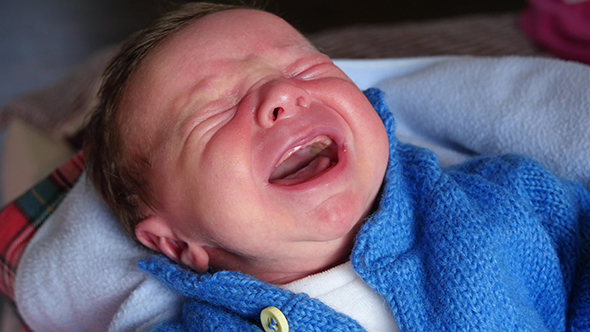 And infants need a lot of sleep—14 to 17 hours a day in their first three months, and 12 to 15 hours in the next eight months. Sometimes good ‘ol nappy time will do the trick. (And it might be a prime opportunity for you to sneak one in too!)
And infants need a lot of sleep—14 to 17 hours a day in their first three months, and 12 to 15 hours in the next eight months. Sometimes good ‘ol nappy time will do the trick. (And it might be a prime opportunity for you to sneak one in too!)
In pain: Cries of pain or discomfort begin as a high-pitched, intense wail, followed by very loud crying. They can be the most difficult kind of crying to witness. You may notice a change in your baby’s behavior, movements, or expression, and they may grunt or hold their breath. Frequently, these kinds of cries are caused by teething, diaper rash, constipation, or something intrusive in their environment. Gas may also be to blame, as can colic—and, no, they are not the same.
If you hear burps and toots coming from your little sweetheart, or suspect they have trapped gas in their tummy, Infants’ Mylicon Gas Relief Drops in dye-free or the original formula can help quickly make them feel better. They gently break down gas bubbles to help your baby naturally pass them. Plus, the active ingredient in them won’t stay in your tiny one’s system—it’s not even absorbed. (Read more about How To Relieve Infant Gas.)
Plus, the active ingredient in them won’t stay in your tiny one’s system—it’s not even absorbed. (Read more about How To Relieve Infant Gas.)
It may also surprise you that we can help with symptoms of colic as well. Infants’ Mylicon Daily Probiotic Drops can help reduce daily crying and fussiness associated with colic by 50% or more when given every day. They also promote healthy digestion and support immunity. A more comfortable baby is a quieter, happy baby—and a happier mommy.
What Does an “Eh” Cry Mean?
You may have heard your little one make “eh” sounds. But did you know you may be able to decode that too? According to Dunstan Baby Language, there are five baby languages. Abrupt “eh” sounds usually accompany burps. “Neh” vocalizations denote that they’re hungry. A “heh” may mean something is causing them discomfort. The more drawn out “eairh” says they’re trying to pass gas. And an “owh” may come with or without a yawn and signal that they’re sleepy. Cool stuff, right?
What Are The Stages of Crying?
Your bundle of joy is adapting to the world from the time they are born—and it can be a bumpy road. From about the time they’re two weeks old to three or four months can be the most jarring. During this time, they’ll progressively cry more, which tends to peak at about six to eight weeks. They can be noisy and fussy until they’re around three to six months old, crying an average of three hours a day. This is also the time when it’s particularly important that you be sure to rest when you can.
From about the time they’re two weeks old to three or four months can be the most jarring. During this time, they’ll progressively cry more, which tends to peak at about six to eight weeks. They can be noisy and fussy until they’re around three to six months old, crying an average of three hours a day. This is also the time when it’s particularly important that you be sure to rest when you can.
Although it may be difficult to soothe them, rest assured, the frequency of your baby’s cries should start to subside after they get through this rough patch. And, thankfully, after the first six months, they’ll start communicating with you in different ways. You may notice them mimicking your sounds and gestures. At eight or nine months, they’ll be testing out their pipes in a new way: stringing sounds together. By 10 or 11 months, they may start pointing at things they want. You may even hear their first “mama” at 12 to 14 months—precious! (Learn more about infant milestones.)
How To Calm a Crying Baby
Whether you are able to pinpoint the cause of your infant’s crying or not, it’s OK. Don’t beat yourself up. Babies cry—sometimes for no clear reason. But we know how stressful it can be in the midst of a crying episode. In addition to the above tips on how to help calm different types of cries, you can try a few other things to comfort them.
Don’t beat yourself up. Babies cry—sometimes for no clear reason. But we know how stressful it can be in the midst of a crying episode. In addition to the above tips on how to help calm different types of cries, you can try a few other things to comfort them.
Try swaddling them, holding them close to you, and rocking them gently. Sing a lullaby or softly hum a tune. White noise can also help. A ride in a stroller or car may help soothe them. And never forget the power of distraction; funny faces or a shiny toy may help.
Above all, be sure to take care of yourself. If your baby won’t stop crying, put them down somewhere safe, like their crib, and take a few minutes to regroup. Or, ask someone you trust to help. Your little one is highly sensitive to your emotions, both positive and negative. If they sense you’re upset, the situation will only escalate, and you’ll have an even harder time calming them down. Plus, just like you, your infant might just need a little “me” time. After all that crying, they may just need a break too!
After all that crying, they may just need a break too!
Next: Learn all about another way to help calm your crying baby (and yourself!) in the Surprising Mind & Body Benefits of Baby Massage.
Decoding Baby Crying (8 Types of Crying You Might Hear)
Did you know there are several types of baby cries? We all know how babies can cry — during the first few weeks and months, that’s all you hear.
What if we told you there might be a way to understand what your baby is trying to communicate? Decoding baby crying sounds like a job for a super nanny, but it’s not as hard as it seems. By the end of our post, you will know exactly what your baby’s cry means and how to soothe them — and your ears.
Table of Contents
- Types of Baby Cries and What They Mean
- Mystery Cries and What to Do
- The Don’ts of Baby Crying
- Tips for Surviving a Crying Baby
- Hang in There
Types of Baby Cries and What They Mean
Up until their first words, babies use crying as a way to communicate. Did you know that crying isn’t always a bad thing?
Did you know that crying isn’t always a bad thing?
Sometimes, it’s merely a call for attention. However, this is usually not until the second or third month (1).
Here are eight different cries and how to soothe them:
1. Tired
During the first six months, babies sleep a lot — unfortunately, it’s in irregular patterns, and they often confuse daytime with nighttime. Sleep is crucial for an infant as it helps them develop. As a newborn, your baby may sleep a total of ten to 18 hours every day (2).
What to Listen for
Every baby is different, but try to listen for a helpless, breathy, almost like an “owh” sound. Look for a cry that’s easily soothed with comfort.
What to Do
Try to help your baby sleep better, especially during the night. An excellent way to do that is to initiate sleep before they get overtired.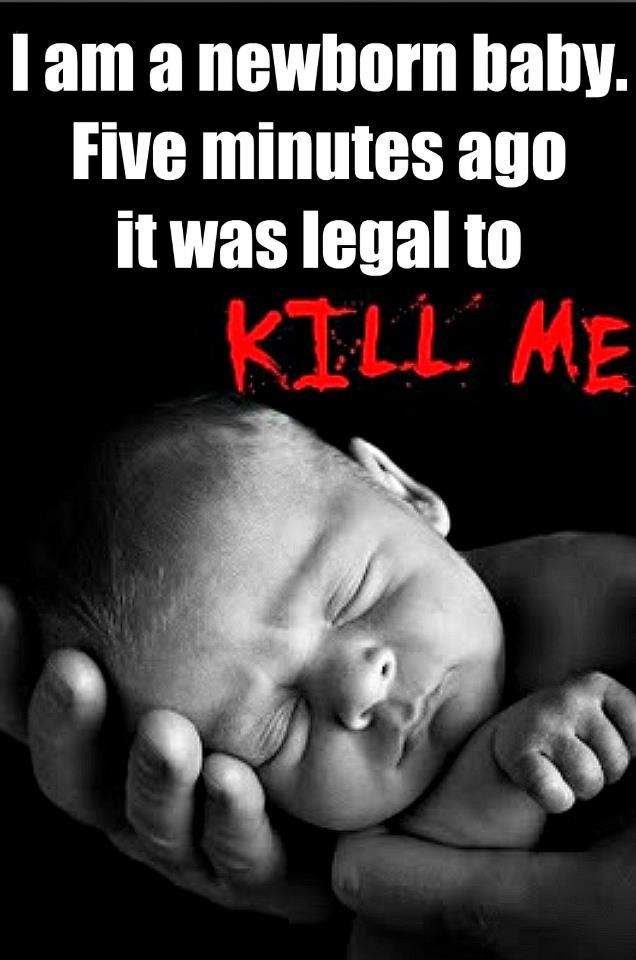 Watch for clues that your baby is giving you such as yawning, drowsiness, and fussiness (3).
Watch for clues that your baby is giving you such as yawning, drowsiness, and fussiness (3).
Experts also recommend you observe your baby’s sleep patterns, no matter how irregular they may seem. Your little one is likely to get tired around the same time every day. Before they fall asleep, place them in their crib to help them sleep on their own.
If your baby is nearing overtiredness, the area around the eyes might become red, and they may rub their eyes. They can also seem restless — your baby’s eyes might be closed, but they can’t sleep.
In such cases, swaddling is a good solution, as it provides some extra comfort. It’s recommended to do a tight swaddle, keeping your little one snug.
Swaddling doesn’t work on all babies, though — my little one hated it. Sometimes, your baby just needs to be left alone. Try to place them in their crib and observe them — perhaps sing a lullaby or use white noise.
2. Overstimulated
Babies love attention and comfort, but it gets overwhelming if you overdo it. Babies can quickly get overstimulated by being in a room full of people trying to hold them or making noise.
Babies can quickly get overstimulated by being in a room full of people trying to hold them or making noise.
What to Listen for
The overstimulated cry is generally quite low toned and not as loud. It can quickly turn into shrieking and is not easily soothed. Listen for a whiny, almost fussy cry.
What to Do
An overstimulated baby needs some quiet. Watch out for the early cues such as fussing, turning their head away, or an angry face.
Try removing or stopping the source of stimulation. If your little one is watching an iPad, turn it off — such devices can overstimulate a baby within minutes and aren’t recommended.
The AAP has updated its recommendation on screen time usage for infants and toddlers. Aside from FaceTime or Skype social interactions, screened devices are not recommended under the age of 2 (4)
It may seem as if your little one really enjoys watching videos and is very adept at figuring out how to use these devices.
This does not mean that doing so is beneficial. In clinical practice, I support the AAP recommendations but understand that complete avoidance is not always practical. My suggestion to parents is to reserve screen time for situations such as plane rides, long car rides, or restaurants where fun distractions are often necessary.
Editor's Note:
Dr. Leah Alexander, MD, FAAP
It can be a bit more challenging if your little one is overwhelmed while you’re out and about. On busy Saturday mornings at the grocery store, an infant can swiftly become overstimulated. Try to find a quiet area, or if possible, go outside to your car where no people or noises are around.
If it happens at home, perhaps after play or too much interaction, try white noise. This can be a whirring fan, noise machine, or your shushing sounds. What helped me was the vacuum cleaner — my little one would calm down right away.
You can try your own technique, such as running warm water over their hands and feet.
3. Bored
Although babies don’t do much, they do experience boredom when left alone for too long. A bored cry isn’t necessarily a bad one — it’s more of wailing for attention, saying they’re lonely.
What to Listen for
A bored cry can sound similar to the overstimulated one — it’s low toned and may come off as whiny. It’s simple to soothe, and it can even turn into laughter once your baby is old enough.
What to Do
When your baby is bored, your first instinct is likely to grab their favorite teddy or sing a song. However, some experts recommend you give your baby some time to adapt before responding.
While you’re giving your baby time to cope, you’re teaching them how to self-soothe. A bored baby can become intrigued by something in the crib, their hands, and even feet. So if you don’t rush to their side, don’t worry, it doesn’t mean you’re being cruel or unsympathetic (5).
4. Hungry
When hunger calls, your baby will cry. During the first months, this becomes the cry you recognize even in your sleep.
During the first months, this becomes the cry you recognize even in your sleep.
What to Listen for
The “I am hungry” cry is distinctive. It has a desperate tone that’s repeated until it’s answered. Listen for a rhythmic, high-pitched squeal, and a “neh” sound.
What to Do
The only thing to do is feed your baby. Before your baby resorts to their hunger cry, they usually send signals. These can include turning toward the breast, smacking their lips, or fussing.
You can also calculate how long it’s been since the last feeding — newborns usually eat every two to three hours (6). If you’re in doubt about the cry, offer your breast or a bottle — if it’s hunger, they won’t say no.
However, if you’re using formula, ensure you’re not overfeeding — avoid offering the bottle before the two-hour mark. If you think your baby may be going through a growth spurt and might need extra formula, mix only two ounces and see if that helps the situation.
5.
 Uncomfortable
UncomfortableFeeling too warm or cold, having a burp stuck in your belly, or wearing a dirty diaper can make a baby pretty uncomfortable. This is another cry that will be likely to wake you up for the sixth time during the night.
[edit0rs-note name=”leah”]Infants don’t need multiple layers of clothing to stay warm at night. In most cases, a simple onesie is all that is needed. If you check on your baby, and the hands and feet feel very warm or almost look red, he or she is probably too warm. Also, keeping an infant too warm increases the risk of SIDS (7).[/editors-note]
What to Listen for
An uncomfortable cry is whiny and high-pitched, almost like the sound is coming from the nose. It can be distressing to hear, especially if it happens while driving and you can’t get to your little one right away. Luckily, it’s pretty straightforward to solve.
What to Do
The first thing to do is to check the diaper. If it has been a while since the last change, try rebooting with a fresh one.
If you’ve finished feeding, and your baby cries again, it’s likely to be a burp looking for an escape route (8). Try burping them, and the crying should stop.
In practice, I emphasize the importance of burping. When infants feed, especially from a bottle, they tend to swallow air which can accumulate in the stomach. This also occurs when babies feed very quickly. If stomach air is not expelled in a burp, it passes to the intestines, resulting in abdominal distension and discomfort.
There are two burping positions that I recommend: holding the infant over a shoulder or placing him or her belly down over your lap. You may have noticed that nurses held your baby in an upright position while supporting the chin to burp in the newborn nursery. Unfortunately, this is not the most effective position. The outer belly muscles are “crunched” in this position, and less air is expelled. This can result in a very fussy baby.

Editor's Note:
Dr. Leah Alexander, MD, FAAP
6. Pain
Pain is a difficult one — although it’s distinctive, it can be scary to hear. Most of the time, it’s due to gas, or your baby might be constipated.
What to Listen for
The pain cry is eerie — high-pitched, like grating and piercing. Your baby may make an “eairh” sound as if they’re trying to pass a bowel movement. It is easy to distinguish because the cry sounds urgent and distressed.
What to Do
It might seem like a cry worthy of a visit to the emergency room when you’re a new parent. However, that’s not likely.
A pacifier works wonders to help your baby pass gas. The sucking reflex involved helps to calm your little one, which in turn, helps their intestines push the blockage along.
If your baby doesn’t want to take a pacifier, try to burp them or otherwise soothe them until they find relief. Gas is essentially a trapped burp which has traveled to the stomach. To avoid this, burp your baby after every feeding.
There are other reasons to hear this type of cry. Occasionally, a piece of hair gets caught around a toe, called a hair tourniquet, resulting in swelling and pain. If you have tried burping, and the crying hasn’t improved, check the toes. If there is lots of swelling, you may need to take your baby to a doctor for removal of the hair (9).
Gastroesophageal Reflux Disease or GERD is a common reason for a “pain” cry. Infants with this condition cry during feedings, often pushing away from the breast or bottle. They have frequent spit-ups associated with crying, and consistently cry when lying in a supine position. You may even notice arching of the back. Bedtime may become very difficult because the baby will cry every time he or she is placed in the crib. If you feel your little one is experiencing these symptoms, consult with a doctor (10).
If you feel your little one is experiencing these symptoms, consult with a doctor (10).
7. Colic
Colic is defined as a baby who cries continuously for more than three hours. The exact cause remains a bit of a mystery to this day.
It was long thought that it was due to an intolerance to cow’s milk. However, breastfed babies get colic too (11).
Colic can be very frustrating for parents, but it is important to know that this phase will pass. Most infants “outgrow” colic by 3 months of age.
What to Listen for
A colicky cry will sound similar to the pain cry, but with higher intensity. Listen for screams and wails, followed by strained movements: pushing as if to pass stool or pulling the legs up toward the belly.
What to Do
It’s not easy dealing with a colicky baby due to the crying. Fortunately, there are ways to soothe them. Try the following:
- Swaddle: Wrap them like a snug burrito with arms crossed — this should calm them.
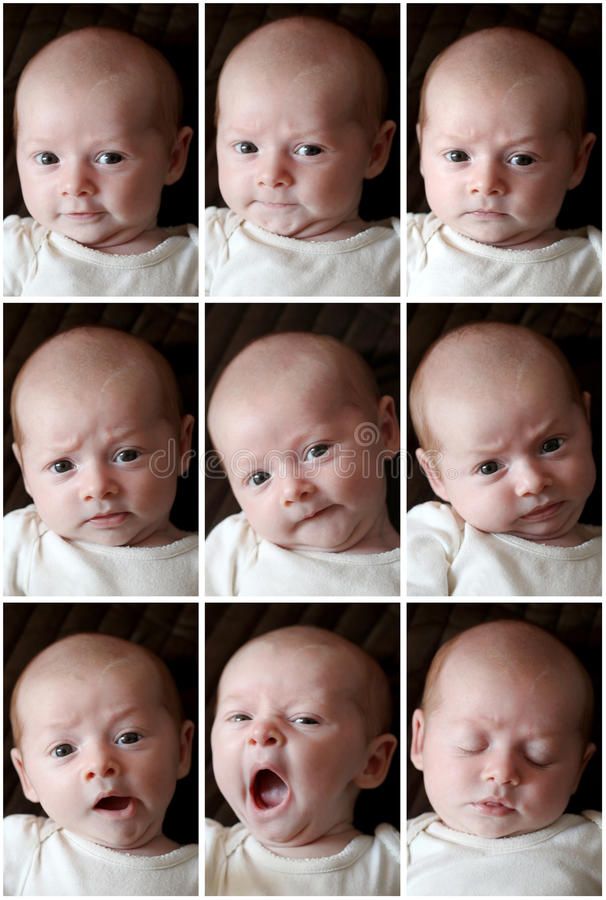 It gives a feeling of security.
It gives a feeling of security. - Backrub: Place your baby on their belly across your lap. Then give them a gentle back rub. This will soothe and relieve some of the pain.
- Walk or rock: Sometimes, movement is all it takes. If possible, walk around your home or sit with your little one in a rocking chair.
- Swing: This is an ideal solution if you’re feeling tired or overwhelmed. Place your baby in their swing or vibrating seat, and let the device calm them.
- White noise: Try the soothing sounds of a washer or dryer — it might be enough to calm them.
Keep In Mind
Parents can sometimes become overwhelmed during this colicky phase. It is important to seek help from others and to take breaks (12).
8. Sick
The sick cry can break a thousand hearts, and it can be frustrating for parents who don’t know what’s wrong.
What to Listen for
Listen for soft, low-pitched whimpers, almost like there’s no energy to make a louder sound. If pain is associated with an illness such as an ear infection, the cry can be high-pitched.
If pain is associated with an illness such as an ear infection, the cry can be high-pitched.
What to Do
Try your best to soothe your baby, but watch out for symptoms such as fever, vomiting, constipation or diarrhea, and rashes. If your baby shows any of these signs or is difficult to console, call the doctor for treatment options.
Mystery Cries and What to Do
It’s essential to remember that babies crying is normal — it’s their way to express themselves. Newborn babies cry for an average of two hours every day. Then from a few weeks old to around six weeks, the amount increases to three hours (13).
This crying is spread throughout the day, and your baby may cry more than this. Some of these cries are nearly impossible to decode — and as long as your baby is healthy and otherwise happy, it’s completely normal.
Crying sessions are commonplace during the evening. It’s the time where everyone is naturally tired and exhausted from the day’s activities.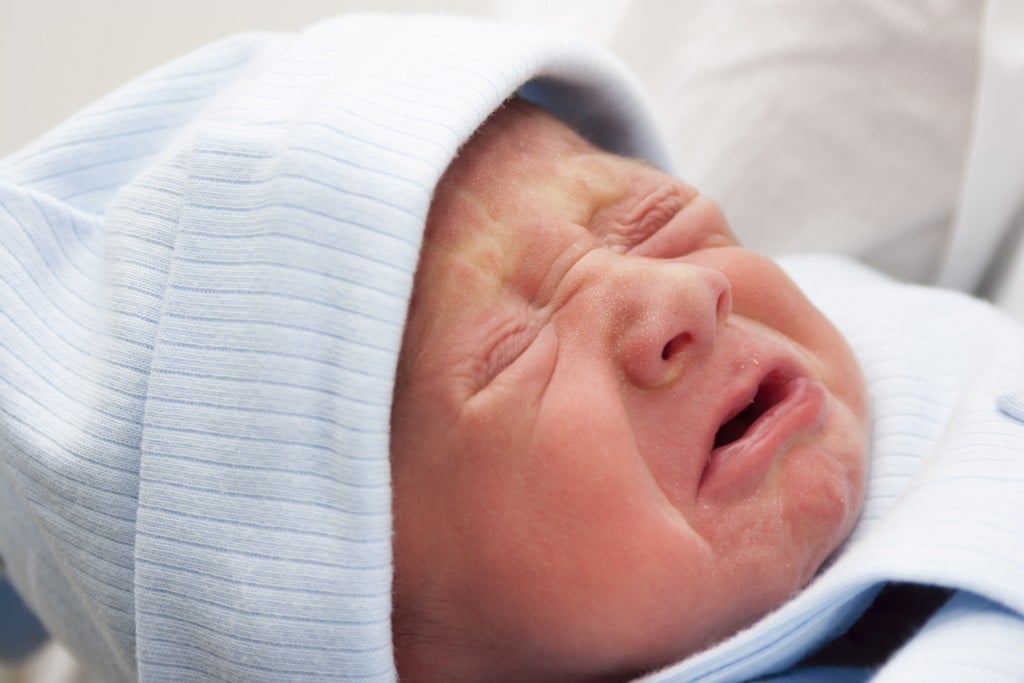 If you’re breastfeeding, your milk supply may be running low as well, which can lead to hunger cries.
If you’re breastfeeding, your milk supply may be running low as well, which can lead to hunger cries.
Sometimes a good cry is what your baby needs to unwind. It’s not a bad thing to leave them for a couple of minutes. Experts suggest it’s beneficial, and may even help some with sleeping (14).
You could try offering them milk if it’s around feeding time. If not, try changing their diaper or even clothes. My little one would calm down after a warm bath.
The Don’ts of Baby Crying
It’s not easy seeing your baby cry, but during the first months, it seems like that’s all they do. It can be frustrating, and even with the best intentions, it’s easy to react in improper ways. Here are some things you should not do when your baby is crying:
1. Don’t Panic
You’re not alone in feeling distressed or helpless when your baby cries and won’t stop, or cries for the 100th time that day. Try your best to stay calm and not panic. If you’re starting to cry too, getting frustrated, or even a little agitated, it can spook your baby further (15).
If you need a timeout for a minute or two, put the baby in a safe place and take a breather (16).
2. Don’t Ignore
Without contradicting ourselves, it’s crucial to find the balance between ignoring and taking a breather. It’s okay to take a minute for yourself, but you should never ignore your baby’s calls, especially with infants.
When your baby begins to cry, try to respond as quickly as possible, especially if you know there is a reason for it. They may be waking up from a nap and need food and a diaper change. By waiting, the hunger cry can swiftly escalate into distress or anger, making it worse.
3. Don’t Punish
A timeout doesn’t work on a baby the same way it does on an older kid. Your baby isn’t being demanding or having tantrums — they’re merely communicating distress and feelings. Try to keep your cool, and remind yourself that punishment doesn’t work.
4. Don’t Get Angry
Your baby doesn’t understand it should stop crying when mom gets angry. Instead, it will make them cry more, particularly if you shout at them. Take a deep breath and tell yourself that anger doesn’t solve the issue.
5. Never Shake Your Baby
Spending a lot of time with a crying baby can be heart wrenching and distressing. It’s fine to try and distract your baby with play. However, never shake your baby, either out of playfulness or anger.
Shaken Baby Syndrome
Because of their feeble neck muscles, shaking a baby can destroy their brain cells and decrease oxygen supply to the brain. This can lead to blindness, intellectual disabilities, cerebral palsy, and seizures. In severe cases, your baby could die from complications (17).
Tips for Surviving a Crying Baby
Becoming a parent can be one of the best experiences in life, but it’s also one of the toughest jobs. The first months are overwhelming. Between crying spells, changing diapers, and feeding, it’s not easy getting time to breathe. Research shows that excessive crying can take a psychological toll on parents (18).
However, it’s important to take time for yourself (19). Here are some tips to help you through some of the crying spells.
1. Take a Break
You don’t have to be the super mom or dad who never leaves their baby’s side. When feeling tired or overcome, it’s a good idea to let someone else take your little one. This could be your partner, family member, or another caregiver — as long as they’re responsible and trusted.
Taking a break, such as going outside by yourself, relaxing in a bath, or even having an undisrupted nap, can do wonders. It doesn’t mean you’re neglecting your baby, and may also make you a better parent.
2. Remember to Breathe
I clearly remember during some of my baby’s longer crying spells asking myself if it would ever end. They seem inconsolable, but what helped me was constant reminders that the crying would stop.
If colic is what’s causing the crying, remember that it goes away around three months of age. This may sound like a lot, but time flies by with a newborn.
3. Remember Yourself
Taking care of yourself is just as important as caring for your baby. Eat a healthy diet to restore your energy, and try to do some exercise once in a while. You don’t have to do rigorous running — a brisk stroll with your baby is all you need.
Exercising or taking walks can also enhance your mood and overall well being. It can help you deal with the crying spells (20).
4. Call for Help
If it’s getting too upsetting, don’t hesitate to call for help. You can contact your doctor, a support group, a therapist, or even a call service. Talking with someone who listens always helps, especially if you’re a single parent.
Hang in There
Decoding baby crying is an excellent way to respond faster to their needs and stop the tears. It’s fairly easy when you know what to listen for.
When babies cry, it can get overwhelming — keep in mind that it won’t last forever, and try to stay calm. Take a break when you need to and prioritize your own needs once in a while when possible.
Feedback: Was This Article Helpful?
Thank You For Your Feedback!
Thank You For Your Feedback!
What Did You Like?
What Went Wrong?
Types of crying babies are scientifically systematized - this will help parents better understand babies
Science
close
100%
Types of crying in infants are linked to the conditions that cause them. This will help parents understand their children better.
It is often difficult for young parents to understand why their baby is crying. And while hunger, anger, fear and pain are the main causes of crying in babies, it can sometimes be quite difficult to recognize the cause in a particular case.
“Crying is the main and in most cases the only way a child expresses negative emotions,” explains Mariano Cholis, a researcher at the University of Valencia.
Gonorrhea changes its face
There is a growing incidence of multidrug-resistant gonorrhea in the US, which is not treatable by most. ..
April 24 11:24
A group of researchers from the Universities of Valencia, Murcia and the National University of Distance Education (UNED) conducted a study of crying patterns caused by various causes. Study published in the Spanish Journal of Psychology. The sample included 20 children aged 3 to 18 months. In addition, the study involved adults who were required to correctly identify the cause of the child's crying, and most of whom, however, did not cope with this (especially in cases of anger and fear in the child). However, as Cholis points out, “although observers cannot determine the cause of babies crying when they are hurt, it evokes a stronger affective (emotional) response in them than when crying out of anger or fear.”
According to the results of the study, the main differences appear in eye movements and cry dynamics.
“When children cry out of anger or fear, they do so with their eyes open, but close their eyes if they cry out of pain,” the researchers concluded. As for the dynamics of the cry, its intensity and the gestures with which it is accompanied gradually intensify if the child is angry. If he cries out in pain or fear, then the intensity of his crying does not change throughout the process.
| Eyes half open. The gaze wanders, or is fixed at one point. The mouth is open or half open. The intensity of crying gradually increases. | Anger (the child is angry) |
| Eyes wide open all the time. A piercing look. Tilts his head. The intensity of the cry rises sharply to the limit. | Fear |
| Eyes are closed almost all the time, they open only occasionally. The gaze is directed into the distance. Tension in the eyes, deep wrinkles on the forehead. The scream starts immediately with maximum force. | Pain |
For experts, the fact that pain is the most easily recognizable emotion may have an adaptive explanation. Since such crying is a warning about a potential threat to the health and life of the baby, it prompts the adult to immediately respond and find out the reason.
Influenza vaccine saves babies
Influenza vaccination during pregnancy reduces the risk of fetal death. Scientists came to this conclusion...
January 23 19:47
When a child cries, multiple wrinkles appear on his forehead, in the area of the eyebrows and lips, his mouth opens, and his cheeks are pulled up. Scientists have identified three patterns of crying, corresponding to three negative emotions.
If the child is angry, he will keep his eyes half open, wander around with his eyes, or, conversely, fix his eyes at one point. His mouth will be open or half open, and the intensity of his crying will gradually increase. In case of fear, the eyes remain open all the time (which brings to mind the saying “fear has big eyes”). From time to time, children look with a penetrating gaze and throw back their heads. The strength of their scream increases significantly and becomes almost "explosive".
If the baby is in pain, he keeps his eyes closed, only occasionally opening them for a few moments and looking into the distance. There is considerable tension in the eye area, as well as deep wrinkles on the forehead. The cry begins with maximum force, and immediately after the stimulus.
The team of scientists hope that their research, in addition to contributing to basic science, will have practical benefits and help young parents better understand their child.
Subscribe to Gazeta.Ru in News, Zen and Telegram.
To report a bug, select the text and press Ctrl+Enter
News
Zen
Telegram
Picture of the day
Russian military operation in Ukraine. Day 292
Online broadcast of the military operation of the RF Armed Forces in Ukraine — Day 292
"We will isolate the theater of operations." What did they say in Kyiv about the blowing up of the bridge in Melitopol
As a result of explosions in Melitopol, an automobile bridge was damaged
How salaries of public sector employees will increase in 2023
Putin instructed to raise public sector salaries at the same pace as the average for the economy
DPA: most EU countries agree to freeze EU funds for Hungary
Judge Sheindlin, who sentenced Bout, stated that she did not consider him a terrorist: he is a businessman
Bloomberg: Russia has the opportunity to restore the status of the main gas supplier in Europe
The Russian Embassy in Canada called on the authorities to condemn Kyiv's actions against civilians
News and materials
A schoolgirl disappeared in the Urals
Brazilian national team legend Ronaldo expressed his satisfaction with the organization of the 2022 World Cup
Bloomberg: LockBit hackers stole California Treasury data and demanded a ransom
Boxer Fury announced the readiness of the football player Rooney to spar with him
Vedomosti: operators agreed to launch national roaming in new territories
Head of the IAEA Grossi met with the Prime Minister of Ukraine and discussed the safety of NPP
Goal: Messi is the main contender for the Golden Ball
Izvestia: a new line will appear in payments for housing and communal services for payment for the installation of smart meters
American investor Jim Rogers predicted an increase in tension between the US and Europe
The financier told how you can make money on "rising prices"
Judge Sheindlin, who sentenced Bout, does not believe that he planned to kill Americans
Former Dynamo player Semshov said that Messi deserves to become world champion
Vladivostok was hardly cleared of snow, flights were canceled at the airport
Midfielder of the Netherlands national team Lang spoke sharply about the gloating of Argentina players
Vilfand: heavy snow and drifts on the roads are expected on December 14 in Moscow
Pushilin: more than 50% of the territory of the DPR is liberated from the Ukrainian military
Vedomosti: Putin and Xi Jinping will hold talks on the eve of the New Year
"Strana. ua": in the Pechersky district of Kyiv, the "point of indestructibility" caught fire
All news
"They are ready to make concessions, despite the rhetoric." What do the West think about Kyiv's plans to return Crimea
WP: Western politicians believe that Zelensky does not believe in the possibility of returning Crimea
"The prospect of nuclear war is getting too close." In the US, they explained why
Former White House employee Roberts admitted that Russia's victory is preferable for him
"The bodies will be removed and Russia will be blamed." What is reported about the execution of people in Berislav
RIA Novosti reported about the execution of 20 people by the Armed Forces of Ukraine in Berislav and the impending provocation
"The parties dispersed from the collision site." What is known about the conflict on the border between China and India
Media: the Chinese military entered the line of actual control, they were stopped by Indian forces
Peskov promised to announce in the coming days the answer to the introduction of the oil price ceiling
No reception, no press conference. The Kremlin told about traditional December events
"Everything happens absolutely according to the law." How will the scandal about the fight involving Leps end
The lawyer said that Leps compensated the damage suffered in a fight with him from St. Petersburg
Ronaldo's tears and Messi's last chance: the best photos from the 2022 World Cup
Another blood-stained package arrived at the Ukrainian Embassy in Greece. The sender's address is the same
In Greece, an investigation began due to a bloody package sent to the Embassy of Ukraine
Starring Damon and Similarities to Pocahontas: 10 Incredible Facts About Avatar
10 Facts About the First Avatar - Ahead of The Way of Water Part 2
Viktor Bout joined the Liberal Democratic Party. He is not going to vote yet
Three days after returning from prison in the United States, Viktor Bout joined the Liberal Democratic Party
"This is especially important in winter." Zelensky asked Biden to help with air defense
Zelensky told Biden about the destruction of 50% of Ukraine's energy infrastructure
The second burning shopping center in three days. All about the fire in the suburbs
The Ministry of Emergency Situations called a short circuit the cause of the fire in the Stroytrakt shopping center in Balashikha
“When a strong AI appears, a person will be evolutionarily backward”
Analyst Pivovarov reported that artificial intelligence models already have a personality
Newborn babies cry in their mother's language
An international team of scientists concluded that the type of language spoken by the mother of an infant affects the acoustic properties of his crying from the first minute after birth. Thus, if a woman speaks one of the tonic languages, such as the African language Lamnso, then the sound frequencies in her child's voice will be more diverse compared to the frequencies in the voice of a child born to a native speaker of an atonic language, such as German. The authors' study was published in Speech, Language and Hearing, a press release on the website of the Julius Maximilian University of Würzburg briefly describes him.
It is known that a child in the womb of a woman already by the 26th week of pregnancy is able to hear sounds and react to them. Studies have shown that among the noise surrounding the fetus, it is the mother’s voice that is the most significant: at its sound, the pulse quickens in children, which indicates their increased attention. However, amniotic fluid reduces the volume of any external noise by about half, so it is difficult for a baby in the womb to pick up the subtle features of human speech. However, studies show that newborns are able to distinguish their native language from a foreign one.
In a new study, the researchers studied how the specific language environment affects the formation of the vocal properties of newborn children. To do this, they compared the crying of babies whose mothers speak languages that differ in the type of stress - tonic and atonic. In tonic languages, the stressed sound is distinguished by an increase or decrease in tone, that is, the main frequency of the vowel, which corresponds to the frequency of the vibration of the vocal cords. In atonic languages, the stress sound is distinguished by an increase in the pressure of the exhaled air stream, as well as a more significant tension in the muscles involved in articulation. In tonic languages, the tone of a stressed syllable can perform a semantic function, and therefore there can be several tones - for example, in Chinese there are four of them, and in Vietnamese - six. Each of them has its own main frequency, respectively, in the speech of people who speak a tonic language, it changes more significantly than in the speech of native speakers of an atonic language. A new study was devoted to the study of the main frequency in the crying of newborns.
Linguists recorded spontaneous, unprovoked crying from 42 babies during their first week of life. The native language of the mothers of one half of the newborns was German, and the second was the African language Lamnso. The peculiarity of the latter is that it uses eight tones to convey semantic differences. Lamnso belongs to the Benuecongo language family and is spoken by the small Nso people living in Cameroon.
The researchers observed how the fundamental frequency range and other acoustic parameters in the voice of babies changed, and also recorded the duration of crying. Linguists were able to record, on average, 26 fragments of crying for each German child and 22 fragments of crying for each newborn whose parents speak Lamnso. In total, the authors of the work received 1002 short audio recordings.
For each recording, a spectrogram was created, which the researchers divided into five equal parts in time to plot the change in the amplitude of the sound wave. A comparative analysis showed that there are significant differences between the crying of the two groups of children. The difference between the highest and the lowest fundamental frequency in the voices of German infants turned out to be smaller than that of NSO children.
